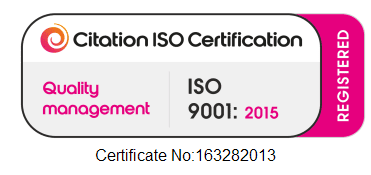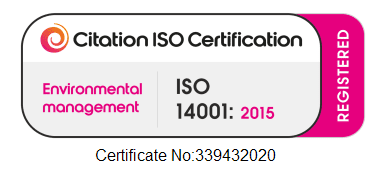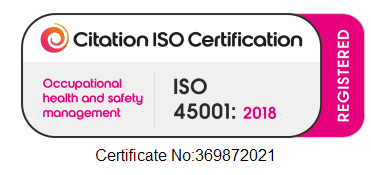The Facts on Strapping Tools & Machinery
With such a wide range of manual tools and automatic machines, it may be difficult for the newcomer to strapping to know which is the best choice for them. In this blog we hope to make this selection process easier by discussing the various factors that will influence the final decision.
- Frequency of use
How often are you strapping a carton, crate or pallet? Unless you are doing this almost continuously, the chances are that a manually operated tool or set of tools will be sufficient. Higher frequency use will be more likely to generate the payback needed to justify the investment in a strapping machine, and will also benefit from the increased productivity. - Mobility
Smaller cartons can be easily loaded onto a table strapper or fed through an arch strapper, but larger crates and pallets will need to be manually strapped unless processed in large volumes (horizontal and vertical pallet strappers can be operated as standalone machines or incorporated into a packing line). - Application
The method and tools used to secure strapping also depend on the type of strapping you will be using, which is in turn determined by what you are using it for.
The tools for the strap
Starting with the easiest, polyester cord strapping (woven, composite and hotmelt) is always secured with a plastic or metal buckle. As this locks onto the strap while it is tensioned and prevents it from loosening, only a tensioner is needed. The strap is also easy to cut with a sharp knife or appropriate safety cutter. Should the strap need re-tensioning due to strap elongation or load settling, the buckle system will allow the tensioner to do this.
Polypropylene is the most widely-used strapping type due to its lower cost and versatility: it can be used with the buckle/tensioner combination, secured with a metal crimping seal or friction welded.
Steel strapping is primarily secured with metal crimping seals. It can also be secured without a separate seal, using a tool which crimps the strap itself in a pattern that maintains a firm grip between both strap ends.
Separate tensioner and sealer
The advantage of separate tensioning and sealing tools is their relatively low individual weight, particularly where heavier grade strapping is used. The tensioner will lock onto the strap and hold it under tension while the operator manually applies and crimps a metal seal, then the tensioner is released and removed from the strap. The connection between the sealed strap and the strapping reel is then severed; most plastic strapping can be easily cut with a safety cutter, but steel strapping will need special metal cutting shears.
Using separate tools also gives the operator greater choice. A separate tensioner is easier to use on a vertical surface and some can be fitted with an attachment that makes them suitable for securing round and irregularly shaped packs.
A separate sealer can be selected for specific features such as jaws that automatically orientate with the seal, create a double notch for higher seal strength or a single notch that releases more easily from round or irregular packs, or a side action that reduces operator strain.
Combination tool
This is a tensioner, sealer and cutter in one tool. The strap is locked and tensioned and the seal applied manually, then the combination tool simultaneously crimps the seal and severs the strap from the reel. The ‘sealless’ steel strapping mentioned earlier is achieved with a variation of the combination tool.
Because of the weights and forces involved, combination tools for steel strapping are only available for strap up to 19mm wide; above that, separate tools must be used.
Strapping cutters
As mentioned earlier, most plastic strapping can be easily cut with a safety cutter but steel strap requires properly designed tools. For thinner grades of strap these are similar to metal cutting shears, but for heavier grades they more closely resemble bolt croppers.
**Severing steel strap from the reel is relatively easy and safe as the strap isn’t under tension, but cutting a tensioned strap can be extremely dangerous and great care must be taken to avoid serious injury as the strap tension is suddenly released and the sharp, severed ends spring apart. Some steel strap cutters feature rubber pads on either side of the blade that absorb some of the initial force as the tension is released, allowing the strap to part less aggressively.**
Friction weld tools
These are another variation of the combination tool, compatible with polypropylene and oriented polyester strapping. Operator involvement is however greatly reduced, while shorter strapping cycle times and consistent strap tension are guaranteed.
The operator manually feeds both ends of the strap into the tool, then powered by high-capacity lithium-ion batteries, at the touch of a button the tool automatically tensions and seals the strap. The strap is severed from the reel and then released from the tool, and another strapping cycle can begin immediately.
A friction weld tool is ideal for medium to high volume strapping of large crates or palletised loads.
Table strappers
A table strapper is a good option for medium volume carton strapping and bundling, using a combination of polypropylene strap and friction weld sealing to create fast, consistent strapping. The loose strap end is manually wrapped around the carton or bundle and fed into the tensioning mechanism, where a sensor detects it and starts the tensioning, sealing and cutting cycle.
The strap can be set or manually extended to any required length and any additional slack is taken up during the tensioning stage. Without the limitations of a strapping arch, the maximum carton size is only governed by what will safely balance on the table.
Table strappers are generally mobile units for intermittent use, designed to be wheeled into position when required and stored under a bench or out of the way when not.
Side action strappers
Side action strappers are a variation of the table strapper, with the tensioning and sealing mechanism mounted to the side of the table rather than underneath it. The table height can generally be adjusted to place the sealing point at the best position on the side of the pack.
The main benefit of a side action sealer is that in a wet or dirty environment, liquids or particles from the packing are prevented from falling into the tensioning and sealing mechanism.
Arch strappers
Where high volumes of cartons are strapped continuously, an arch strapper will deliver the best performance. Arch strappers automatically feed a loop of strap around the inside of the arch and under the table, so that as soon as the strapping cycle begins it only needs to tension, seal and cut.
At the most basic level, cartons will be manually placed in the arch and the strapping cycle will be started with a foot pedal, button or sensor. The operator will visually align the carton so that the strap is correctly placed, and manually remove the carton after sealing.
More advanced models feature roller tables to facilitate handling of heavier cartons. These are often accompanied by a receiving conveyor onto which the operator pushes the strapped carton, for it to continue its journey through the despatch process.
Operator involvement can be virtually eradicated with an arch strapper featuring a belt or roller powered table that can be integrated with other elements of an automated packaging line. These strappers can apply multiple straps at pre-programmed positions or intervals.
Pallet strappers
A semi- or fully-automatic pallet strapper can save considerable time if pallets are frequently strapped. A semi-automatic such as the Optimax PST3 is a lightweight mobile unit that is placed against the pallet with a strap probe extending through the pallet frame. The strap is manually fed from the far end of the probe back into the tensioning unit, where a sensor detects it and carries out the tensioning, sealing and cutting.
For higher volumes a fully-automatic such as the TPS200V features an arch large enough to enclose a complete pallet load. the pallet is positioned within the arch and the cycle begins, extending a probe through the pallet frame to connect with the base of the arch and complete a circular path for the strap. As feed, tensioning, sealing and cutting are performed automatically, the TPS200V can be easily integrated within an automated packing line with conveyorised pallet loading.
Specialised strappers
Strapping machines are also manufactured for specific industries such as printed media and palletised loads.
If you would like advice on strapping tools or machines then please contact Lester Coldrick, our Technical Sales person:
Lester Coldrick
Technical Sales & Support
Hub Packaging Limited
Tel: +(0) 28 4175 4977
Email: lester.coldrck@hub-packaging.com

















